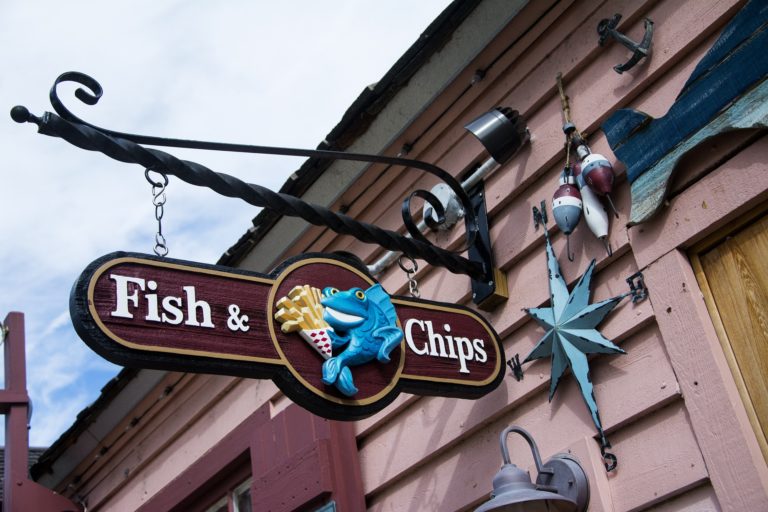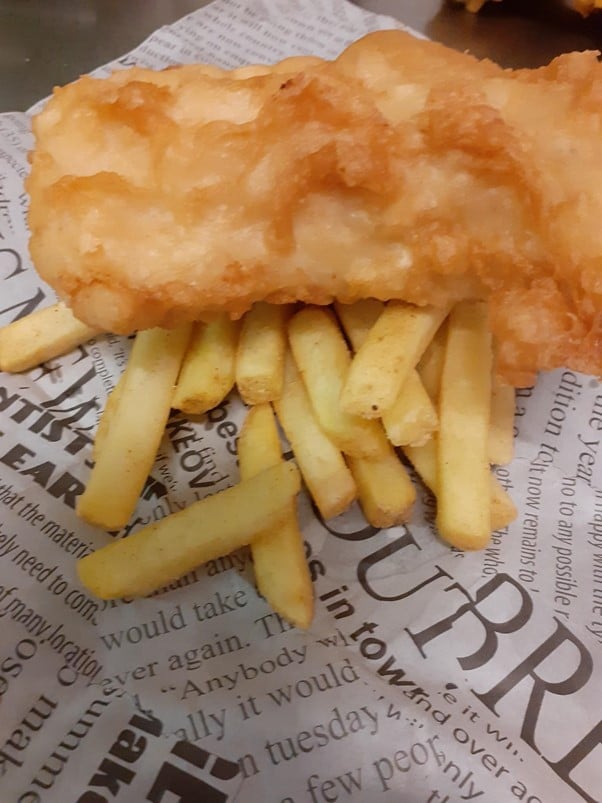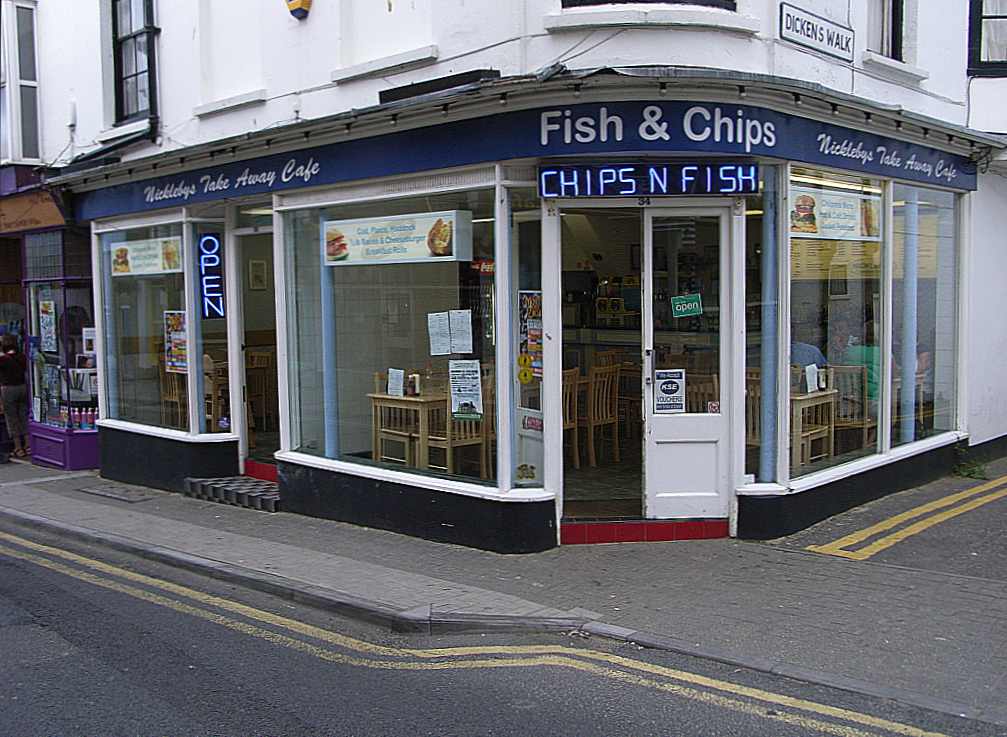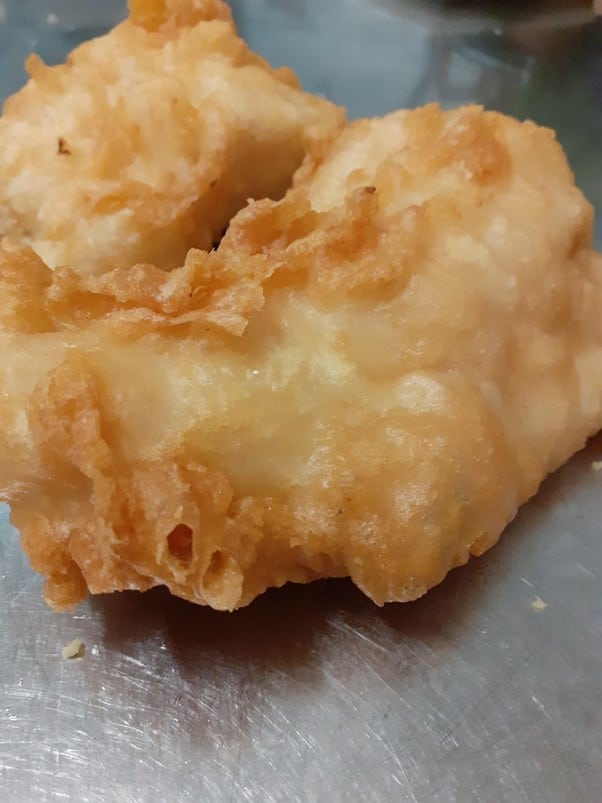
When you think of Britain what comes to mind? Rain, the Houses of Parliament, London? But there is certainly one thing that we have exported around the World, and nobody does it better – Fish and Chips. What could be better than a freshly cooked piece of fish coated in a crispy batter, served on top of a pile of chips, smothered in salt and vinegar and wrapped up in yesterday’s newspaper. Eat it sitting on the quayside watching the fishing boats coming home and fighting off the seagulls – aaah British heaven! And possibly the ultimate street food.

So how did this iconic Britishness come about? As with many of these historic dishes there are several claims to the origins, but it is widely accepted that fried fish served with chips started around 1860 in Britain. During the industrial revolution of the 19th century it is said that fish and chips helped fuel the workers in the factories and mills of the North of England.
Today Fish and Chips is still very much associated with the North of England but it is claimed to have first been served in the East End of London by Joseph Malin although in Lancashire in 1863 a fish and chip shop opened with an inscription in the window stating that it was the first fish and chip shop in the world. In an effort at compromise it is believed that the Jewish population in London first served fried fish and that chips were synonymous with the North, although the French were the first to fry a potato giving us French Fries! (Known as chips in Britain)

At the height of its popularity, and when enormous quantities of fish were being landed from the North Atlantic, there were around 35000 Fish and Chip shops in Britain. Today there are still about 8500, which means there are about 8 times as many Fish and Chips as there are McDonalds!
Fish and Chips has played such an important part in the recent history of Britain that during the Second World War it was one of the foods that the Government refused to ration and people would queue for hours if the chip shop had fresh fish. Alfred Hitchcock was born above a chip shop which was run by his family and George Orwell wrote about Fish and Chips as being the number one home comfort that kept the population happy and “averted revolution”.
What Makes Good Fish and Chips
The first thing is obviously the fish. Traditionally cod and haddock have been the fish of choice but in recent years supply has sometimes been limited due to fishing quotas. North Atlantic cod became difficult because of previous over-fishing and tight limits imposed by the European Union, so alternative more plentiful fish were introduced including Pollock, Whiting or Coley.
Secondly, the chips. These are not French Fries but thicker cut chips. The choice of potato is important and the best will give a floury, light middle but stay crispy on the outside. Ideal varieties include Maris Piper and King Edwards which have a lower water content than some of the waxy potato varieties.
There has been much discussion about how best to prepare potatoes for frying, some people choosing a three stage cooking process, but the simplest method is to blanch your chips in medium-hot oil then cook them to serve in very hot oil. The cooking oil can be a subject on its own. Many people believe that the best Fish and Chips are produced using beef dripping as the cooking oil as opposed to the healthier and more widely used vegetable oil found in most fryers.
And finally, the batter. A crisp, golden coating to that delicious, white, flaky fish. A good batter that completely encases the fish will mean that the fish will steam inside that beautiful coat and not come into contact with the oil. There are many different recipes out there for the perfect batter and each Fish and Chip shop will have their own variation on the basic recipe. Here I will share my recipe and give guidance on how to prepare the perfect Fish and Chips.

- 250g strong flour
- 1 tablespoon cornflour
- 1 teaspoon baking powder
- 1 teaspoon turmeric
- 1 small tin lager or English Ale
- pinch salt
Put all the dry ingredients into a bowl and stir in the lager until you get a nice smooth batter, slightly thicker than pancake batter. Some people whisk the ingredients, I prefer the Odd Thomas (Dean Koontz) method of stirring!! You may substitute the lager for sparkling water.
Take your fish fillet and dip it in seasoned flour before coating it in the batter then slowly introducing it to the fryer. As a basic guide you know the fish is cooked once it floats. To serve in the traditional manner place the fish on top of a pile of chips and wrap it up in newspaper – however in recent years this practice has been banned because the ink in the newsprint could be harmful, so you will only find Fish and Chips wrapped in special food grade paper.